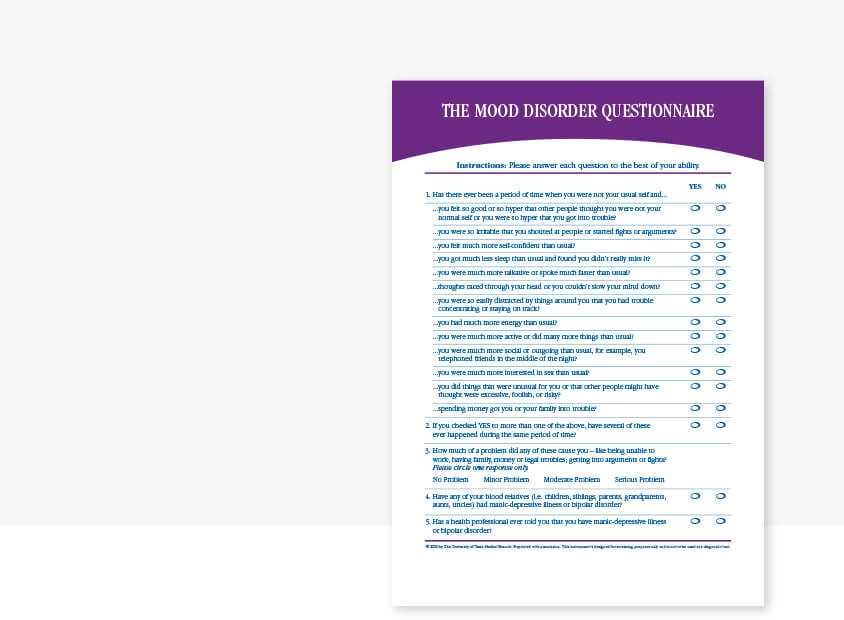Symptoms
Text below adapted from The patient who has mania in Psychiatry in primary care by Roger S McIntyre, (CAMH, 2019).
There is typically a long delay between symptom onset and correct diagnosis and treatment.
The key elements of bipolar depression include:
- initial presentation of depression that progressed into treatment-resistant depression
- hypomania that is exacerbated or unmasked by antidepressant monotherapy (only if the hypomania outlasts initial physiological effects of the medication)
- prominent anxiety, agitation and hyperactivity
- poor impulse control
- family history of mental illness
- early-age onset of disturbance
- seasonal pattern (i.e., worsening, unpredictable pattern at identical times of the year in the absence of a seasonal-related stressor)
- high recurrence/vulnerability
- atypical depressive symptoms
- pattern of comorbidity (e.g., prominent anxiety disorders, substance use disorders, migraine/headache, binge eating, obesity).
Screening and Assessment
Rapid Assessment
In a primary care setting, rapid assessment of a possibly manic or hypomanic patient primarily needs to address the safety of the patient and family or caregivers, as well as health care practitioners. The complexity and severity of symptoms in mania often necessitate hospitalization and require rapid and effective symptom control. Agitation, irritability and severe aggression are common elements of mania and are associated with self-harm (Suppes et al., 2017).
Consider routine screening for bipolar disorder in all patients who present with affective symptoms (Das et al., 2005). Patients with co-occurring anx- iety disorders, substance use disorder or impulse dyscontrol (e.g., gambling disorders) should be closely scrutinized for clinical presentations that suggest bipolar disorder.
Screening Tools
Using a screening tool such as the Mood Disorder Questionnaire is an efficient way to probe for bipolar symptoms. This self-administered questionnaire involves 13 items about manic and hypomanic symptoms. Answering “yes” to at least seven questions constitutes a positive screen. It also indicates that at least some of the symptoms are occurring concurrently and are causing moderate functional impairment. Explore a positive screen further to confirm or rule out a bipolar diagnosis (Hirschfeld et al., 2000).

Mood Disorders Questionnaire
In Mania